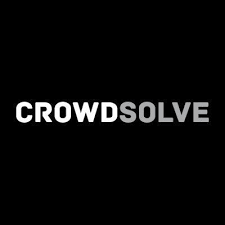Is Everyone Else Still Smarter Than You?
Editor’s note: As innovation conversations move from Crowdsourcing to Crowdsolving, here’s a look at its future and a refresher on its social innovative roots. Adapted from Techopedia’s What is Crowd Solving? and Crowdsourcing: What It Is, Why It Works and Why It Isn’t Going Away
What does Crowdsolving mean?
 Crowdsolving is the idea that many individuals can come together to provide collective solutions to problems. Although this general idea can be applied to any kind of leadership team or structure throughout the centuries, a newer definition implies the use of technologies to guide crowds to collective decisions, or interpret solutions provided by the results of a wide survey.
Crowdsolving is the idea that many individuals can come together to provide collective solutions to problems. Although this general idea can be applied to any kind of leadership team or structure throughout the centuries, a newer definition implies the use of technologies to guide crowds to collective decisions, or interpret solutions provided by the results of a wide survey.In general, crowdsolving is a more specific variant of a phenomenon known as crowdsourcing. Both crowdsolving and crowdsourcing are largely promoted through some relatively new technologies that have changed societies, lifestyles, and the global business world in many ways. These include the ease of transmitting massive amounts of data or collecting diverse data, through a global Internet. Crowdsolving also may be particularly applied to software products or other information technology, especially in addressing any problems related to development or product processes. For example, a development problem addressed through a wide survey of developers may be crowdsolved through the interpretation and use of survey results.
Crowdsolving also may be applied to either business innovation or global problems that the world’s nations face together, where collective ideas can contribute to better, more consistent responses to a challenge.
Crowdsourcing, more specifically, involves distributing a task to an open, undefined network of people through an open call. It seems almost impossible that something so simple could complete tasks once assigned to employees, but in some cases, crowdsourcing really works. Marketers crowdsource ideas for new products; it’s being used to map out gang violence in Mexico; and crowdfunding platform KickStarter has helped launched singer/songwriters, space research and everything in between.
In fact, there are a lot of good reasons to use crowdsourcing. It can help businesses make use of cheap labor and gain access to a much broader array of talents and experiences than they’d likely be able to find in-house. It provides a potential way for all types of organizations – from consumer companies to governments – to find solutions to problems. It can help researchers gather large amounts of data. It has even been used to help artists gather inspiration. The Internet has clearly proved that there’s some wisdom in group thinking – not to mention helped make it possible. But why does it work? And how? And, perhaps most importantly, for how long?
Why sourcing the Crowd is here to stay

If you had a big job to do, where might you start? Perhaps you’d call up a few friends and colleagues to see how they’d approach the problem, and use their collective suggestions to guide your actions. That is essentially how crowdsourcing works, only it happens on a much bigger scale. Instead of asking three friends, what would happen if you asked 300 people? Or 3,000? Or 3 million?
Crowdsourcing, therefore, could be defined as tapping into the public’s collective intelligence to accomplish a task. And, because it draws on so many people, the right kind of crowdsourcing can often arrive at a better solution than you’d get if you put together only the thinking power of a few people, which is more typical in business.
If you break things down a bit more, there are essentially four main types of crowdsourcing activities:
- Crowd Creation: Where a business asks its customers to create content such as blog posts, articles, videos, and jingles.
- Crowd Voting: Where a business asks its customers for their opinions by asking them to judge, rank or filter content.
- Crowd Wisdom: Where a business asks its customers what they think will happen or what trends are coming up. This involves collecting a lot of data from customers and piecing it together to come up with a complete view of the things the company is looking to study.
- Crowdfunding: Where businesses or entrepreneurs receive small amounts of funding for products and ideas from a large group of people who want to support the project.
Why everyone else is smarter than you
Some of the benefits of crowdsourcing are no-brainers. When it comes to labor, a company can get a job done for a lot less money, even for free. That makes sense when you consider that crowdsourced labor often uses the Internet to draw from less expensive labor pools, such as those in India and other parts of Asia. But crowdsourcing isn’t just about labor. It can accomplish other things too.
For example, only customers can drive a viral social media campaign or create coveted word-of-mouth marketing. This is essentially crowdsourcing too. Sure, there may be a need for social media personnel to get the ball rolling, but nothing speaks for a product like its users. In essence, they’re doing the all promotion work.
LEGO, the makers of the long-running children’s building sets, uses the LEGO CUUSOO site to crowdsource new product ideas. The site recently went worldwide after operating only in the Japanese market. In 2012, LEGO announced that it would produce a new LEGO set based on “Back to the Future,” a 1985 movie starring Michael J. Fox. How could they possibly have known that this movie still has broad, worldwide appeal? (And that a LEGO DeLorean would be oh-so-cool looking?) LEGO got the idea because a member of the public submitted it to LEGO CUUSOO and the design was endorsed my thousands of online supporters.
Similarly, Nokia Labs has been known to use the public to test out its apps. This not only helps the company ensure that the apps it eventually rolls out are what customers are looking for, but it also helps them get ideas for new projects.
And if there’s one real champion of crowdsourcing, it would have to be Google. A lot of content for key Google services, such as maps, places and reviews are submitted by users. When both the Chrome browser and Gmail were new, the services were opened only to a select few and only by invitation. In exchange for these, those who were invited became Google product testers, and their feedback was incorporated into the final version 1.0 of the products that were launched to the broader public.
When Crowdsourcing gets spooky
We know are brains are essentially computers. In a sense, crowdsourcing is just a way to connect them into a sort of supercomputer. That makes sense … in a way. The weird thing is, it actually works. Time and time again, research has found that if you get a big enough group together, that group will be significantly smarter than even its smartest members. In “The Wisdom of Crowds” (2004), author James Surowiecki examines several cases of crowd wisdom at work. The result? Whether it’s guessing the weight of an ox, making a sports bet, or sorting out the Columbia shuttle disaster, the crowd often arrives at a better solution than any one of its individual members.
So, it’s when crowdsourcing is used for science, technology and other types of discovery that things get almost a little spooky. For example, Galaxy Zoo allows astronomers (both professional and amateur) around the world help classify 1 million different galaxies just by showing users photos from the Sloan Digital Sky Survey and asking them to describe what they see. Since its launch in 2007, Galaxy Zoo has harnessed the collective brainpower of hundreds of thousands of stargazers. And when it comes to this task, humans have supercomputers beat. This is just one of the many huge research goals that just wouldn’t be possible without the help of the Web and crowdsourcing. Which means that in a way, crowdsourcing has the power to solve a lot big problems that have eluded high-powered computers for years.
OK, so crowds are smart. So What?
As we’ll see in the next section, crowdsourcing doesn’t work for everything. But sometimes, it can be as close as a business can get to a magic lamp. In many cases, it can be almost impossible for a business to foresee what customers might want, where the market’s headed, what the next “big thing” will be, or even to put together enough heads to get the job done. But if you put a big enough crowd to work on the job, chances are that a pretty solid answer will emerge – and probably at a much lower cost than what it would take to have all that thinking done in house.
The downside of using the Crowd
What makes crowdsourcing work is also what makes it a problem. The bigger the crowd, the better the solution you’re likely to come up with. But the more people involved, the more complicated things can get. After all, the more data that’s collected, the more time, energy and technology it’ll take to sort through it. And while crowdsourcing can cut costs, the logistics of building, managing and organizing crowdsourced labor can get expensive. (For more on how difficult data can get, check out Taming the Big Data Monster.)
Another key problem with crowdsourcing is timing. It can take a lot of time both to gather and sift through crowdsourced responses. For example, on 99 Designs, a website that crowdsources design projects like logos and Web page designs, users submit what they’re looking for and receive samples and responses from dozens of designers. The end result may be a cheaper design, but not necessarily one that’s easier to manage from the user’s point of view.
Finally, crowdsourcing is, by definition, not confidential. That means that whatever a company is working on won’t be as safe from the prying eyes of competitors as it would be if it was done in-house. For simple projects, that’s probably no problem. For others, it could be a deal breaker.
The Future of the Crowd
Thanks to the increasingly connected world we now live in, it seems unlikely that crowdsourcing will fade into the woodwork anytime soon. But as with most innovations in business, its benefits can often be overblown. In essence, crowdsourcing is a tool which, like any tool, is best used in certain applications.
Does the crowd hold the answer to all the world’s problems? That’s a lot of data to crunch. Come to think of it, we’re putting our money on big data to do that … at least until something better comes along.
Wait! Before you go.
Choose how you want the latest innovation content delivered to you:
- Daily — RSS Feed — Email — Twitter — Facebook — Linkedin Today
- Weekly — Email Newsletter — Free Magazine — Linkedin Group
 At Techopedia, we aim to provide insight and inspiration to IT professionals, technology decision-makers and anyone else who is proud to be called a geek. From defining complex tech jargon in our dictionary to exploring the latest trend in our articles or providing in-depth coverage of a topic in our tutorials, our goal is to help you better understand technology – and, we hope, make better decisions as a result.
At Techopedia, we aim to provide insight and inspiration to IT professionals, technology decision-makers and anyone else who is proud to be called a geek. From defining complex tech jargon in our dictionary to exploring the latest trend in our articles or providing in-depth coverage of a topic in our tutorials, our goal is to help you better understand technology – and, we hope, make better decisions as a result.
NEVER MISS ANOTHER NEWSLETTER!
LATEST BLOGS
Three things you didn’t know about credit cards
Photo by Ales Nesetril on Unsplash Many of us use credit cards regularly. From using them for everyday purchases to…
Read MoreFive CV skills of a business-minded individual
Photo by Scott Graham on Unsplash The skills listed on a CV help employers quickly understand your suitability for a…
Read More


